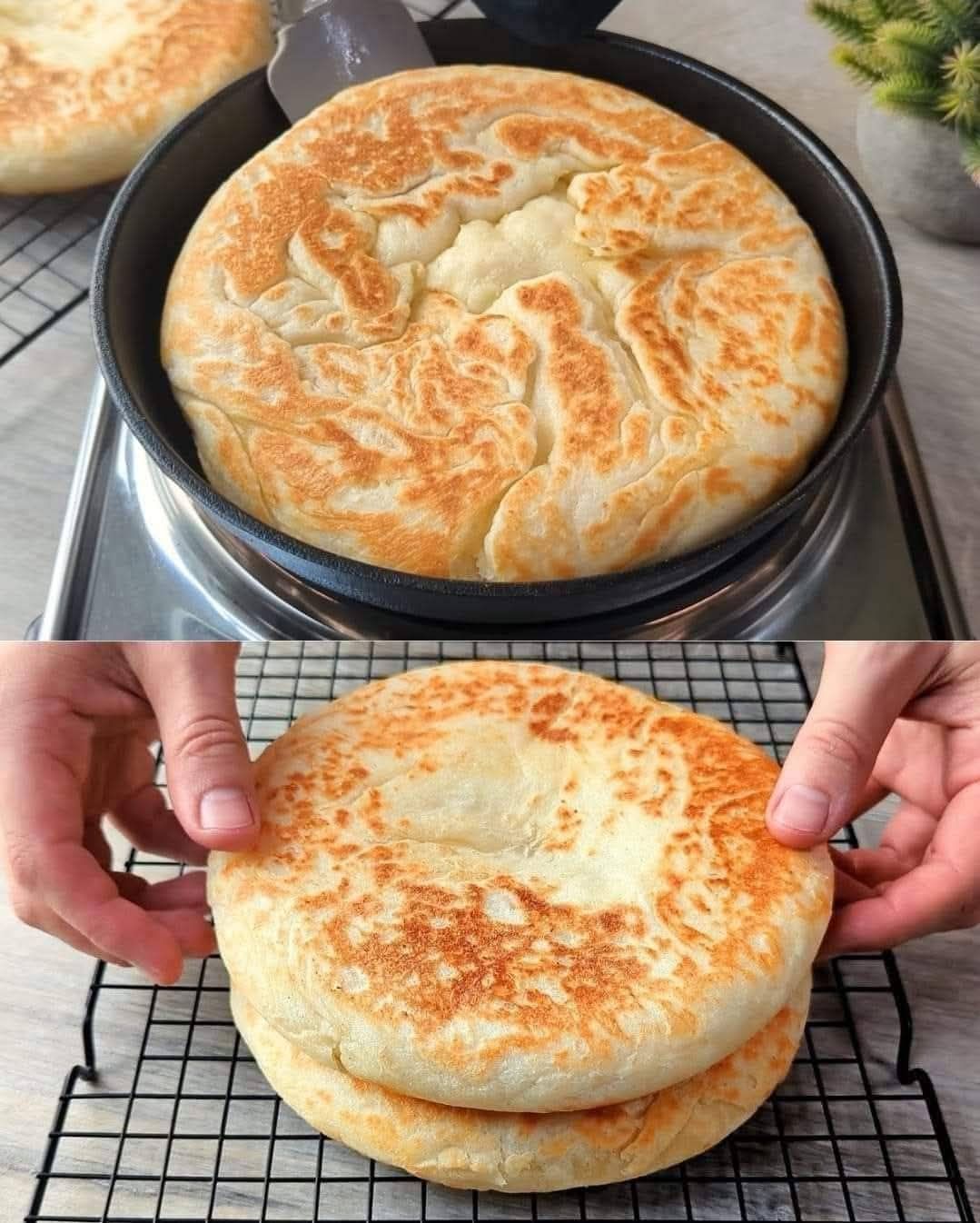There’s something truly satisfying about waking up to the smell of freshly baked bread in the morning. Homemade bread not only fills the house with a warm, inviting aroma, but it also offers a wonderful opportunity to create a wholesome and nutritious breakfast. This homemade bread recipe is not just delicious; it’s also packed with nutrients, offering a perfect balance of fiber, protein, and healthy fats, making it an ideal way to start your day.
Whether you enjoy your bread with butter, jam, or avocado, this healthy whole wheat and oat bread will elevate your breakfast routine. Let’s take a closer look at the recipe and explore why this bread is so healthy and satisfying.
Ingredients:
- 2 cups whole wheat flour: Whole wheat flour is the base of this bread, offering a rich source of fiber, vitamins, and minerals. It is less processed than white flour, meaning it retains more of the natural nutrients from the wheat grain. Whole wheat flour helps regulate blood sugar levels, promotes digestive health, and keeps you feeling full longer.
- 1 cup rolled oats: Rolled oats add texture, heartiness, and a boost of soluble fiber. Oats are well-known for their cholesterol-lowering properties and their ability to help stabilize blood sugar levels. They also contribute to a soft, chewy texture in the bread.
- 1 tbsp active dry yeast: Yeast is what makes your bread rise and gives it that lovely, airy texture. Active dry yeast is the most common type used for bread making and helps the dough ferment, allowing for a light and fluffy result.
- 1 tsp salt: Salt enhances the flavor of the bread, balancing the sweetness of the honey or maple syrup. It also helps control the fermentation process, ensuring the bread rises properly.
- 2 tbsp honey or maple syrup: These natural sweeteners add a touch of sweetness and help activate the yeast. Honey is also known for its antibacterial and antioxidant properties, while maple syrup offers a distinct, rich flavor. Both sweeteners are healthier alternatives to refined sugar, providing more nutritional value.
- 1 tbsp olive oil: Olive oil is an excellent source of monounsaturated fats, which are heart-healthy and help reduce bad cholesterol levels. It also contributes to the softness and moistness of the bread, giving it a rich, pleasant texture.
- 1 ¼ cups warm water: The warm water is essential to activate the yeast and help form the dough. It should be around 100-110°F (37-43°C) to properly activate the yeast without killing it.
- Optional: seeds or nuts for topping (such as sunflower seeds, flaxseeds, or chopped walnuts): Adding seeds or nuts on top of the bread before baking not only gives it a lovely crunch but also boosts the bread’s nutritional profile. Seeds and nuts provide healthy fats, protein, and essential nutrients, making each slice even more satisfying.
Preparation:
Step 1: Prepare the Yeast Mixture
Start by preparing the yeast mixture. In a small bowl, combine the active dry yeast with the warm water and a teaspoon of honey or maple syrup. Stir to dissolve and then let it sit for about 5-10 minutes. You should see the yeast begin to bubble and foam as it activates. This is a crucial step, as the yeast needs to be activated for the dough to rise properly.
Step 2: Mix the Dry Ingredients
While the yeast is activating, take a large mixing bowl and combine the whole wheat flour, rolled oats, and salt. Stir the dry ingredients together until they are evenly distributed. The oats will add a slightly nutty flavor to the bread, and the salt will help enhance the overall taste.
Step 3: Combine the Ingredients
Once the yeast mixture is bubbly and frothy, add it to the dry ingredients. Also, pour in the remaining honey or maple syrup and olive oil. Stir the mixture until a dough starts to form. The dough should be slightly sticky but manageable. If it’s too sticky to handle, you can add a little more flour, but be careful not to add too much, as it can make the bread dense.
Step 4: Knead the Dough
Transfer the dough to a floured surface and begin kneading. Kneading the dough for about 8-10 minutes is essential because it helps develop the gluten, which gives the bread its structure and texture. If the dough feels too sticky, sprinkle a little flour on your hands or the surface to help manage it, but be mindful of not over-flouring. The dough should become smooth and elastic as you work with it.
Step 5: First Rise
Once you’ve kneaded the dough, shape it into a ball and place it in a greased bowl. Cover the bowl with a damp cloth or plastic wrap and set it in a warm place to rise for about 1 hour, or until the dough has doubled in size. This first rise is crucial for the bread to develop its flavor and texture.
Step 6: Shape the Dough and Second Rise
Once the dough has risen, punch it down to release the air bubbles. Turn it out onto a lightly floured surface and shape it into a loaf. Place the shaped dough into a greased bread pan. If you’d like, you can sprinkle seeds or chopped nuts on top of the loaf at this stage. Cover the pan with a damp cloth again and allow the dough to rise for another 30 minutes.
Step 7: Bake
While the dough is rising, preheat your oven to 375°F (190°C). Once the dough has risen and is puffed up in the pan, it’s time to bake. Place the pan in the preheated oven and bake for about 30 minutes or until the top of the loaf is golden brown and the bread sounds hollow when tapped on the bottom. If you have a thermometer, the internal temperature of the bread should reach around 190°F (88°C).
Step 8: Cool and Serve
Once the bread is baked to perfection, remove it from the oven and allow it to cool in the pan for a few minutes before transferring it to a wire rack to cool completely. It’s best to let the bread cool for at least 30 minutes before slicing to prevent it from being too crumbly. Once cooled, slice and enjoy!
Tips for Perfecting Your Homemade Bread:
- Use Fresh Yeast: Ensure your yeast is fresh and active. If the yeast doesn’t foam in the warm water, it may be expired, and you’ll need to replace it to get the best results.
- Don’t Overwork the Dough: Kneading the dough is essential, but overworking it can lead to dense bread. Make sure you knead just until the dough becomes smooth and elastic.
- Use Room Temperature Ingredients: Make sure the honey, olive oil, and other wet ingredients are at room temperature. Cold ingredients can slow down the yeast’s activation and may result in uneven rising.
- Watch the Oven Temperature: Ovens can vary in temperature, so make sure to check your bread towards the end of the baking time. If it’s browning too quickly, you can cover it loosely with foil and continue baking until it’s fully cooked.
Why This Bread Is Healthy:
This homemade bread is packed with nutritious ingredients that contribute to a balanced breakfast. The combination of whole wheat flour and oats ensures that you get a good amount of fiber, which helps with digestion and keeps you feeling full for longer periods. The honey or maple syrup provides a natural, unrefined sweetness, while the olive oil adds heart-healthy fats that are great for maintaining a healthy heart.
This bread is versatile as well; you can add seeds or nuts to increase the protein and healthy fats, or you can enjoy it plain, topped with your favorite spread or fresh fruit. The fact that it’s homemade means you can control the ingredients, ensuring that it’s free from preservatives or artificial additives, which are often found in store-bought bread.
Serving Suggestions:
- Classic Breakfast: Enjoy a warm slice of this homemade bread with a spread of butter or jam. You can also top it with peanut butter or almond butter for added protein.
- Healthy Toppings: Add sliced avocado and a sprinkle of sea salt for a savory breakfast option. You can even top it with a poached egg for a hearty meal.
- Sandwiches: Use the bread to make delicious sandwiches for lunch. The hearty texture makes it perfect for holding up to fillings like turkey, cheese, and fresh vegetables.
Final Thoughts:
This delicious and healthy homemade bread recipe is an easy and rewarding way to start your day on the right foot. It’s filled with nutritious ingredients that not only taste great but also provide the energy you need to tackle your morning. Plus, baking bread at home is a fun and therapeutic activity that fills your kitchen with an irresistible aroma. Whether you enjoy it on its own or with your favorite toppings, this bread is sure to become a staple in your breakfast routine. Happy baking!





